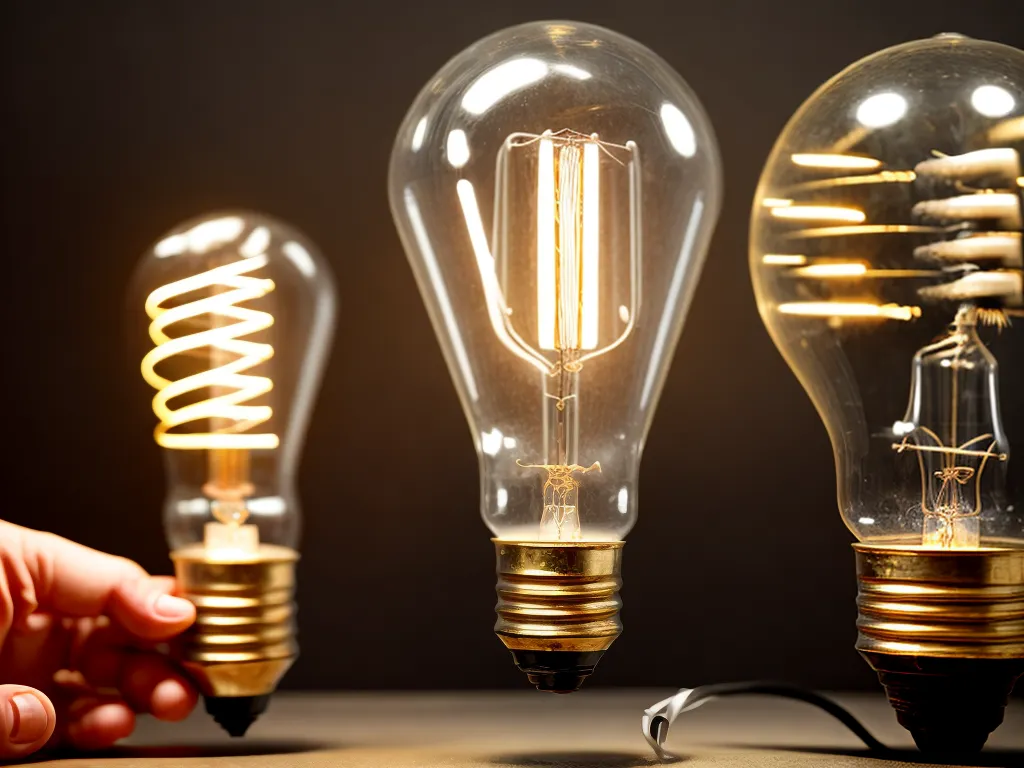
Introduction
The invention of the lightbulb was a major breakthrough, providing a portable, safe source of artificial illumination. However, early lightbulbs had limitations - they were powered by inefficient direct current (DC) electricity and had non-standardized bases or sockets. Thomas Edison's greatest contribution was not inventing the first practical incandescent lightbulb, but creating an electrical lighting system including the Edison screw base that could work with alternating current (AC). The Edison screw lamp helped make electric lighting economical and widely adopted.
Edison's Fully Integrated Electrical Lighting System
When Thomas Edison began commercializing the lightbulb in the late 1800s, he knew that developing an entire electrical lighting system would be key. Edison created the first electrical distribution system to provide DC electricity using underground copper wiring connected to coal-burning generators. He also patented the Edison screw base in 1880 to standardize lamp sockets and connections.
Some key factors that allowed Edison’s lighting system to succeed include:
-
DC power generation and distribution - Voltage could be stepped up and down using transformers, allowing electricity to be transmitted at high voltage over long distances.
-
Parallel circuit wiring - Wiring buildings in parallel allowed them to remain illuminated even if one bulb failed.
-
Standardized bases - The Edison screw base ensured reliable connections and interchangeable bulbs between lamp fixtures.
-
Improved vacuum pumps - Better vacuums increased bulb longevity. Tungsten filaments in later bulbs also improved efficiency.
By providing the infrastructure for electricity distribution along with standardized sockets and connections, Edison created a fully integrated lighting system.
The Edison Screw Base - A Standardized Connection
The Edison screw base was a simple yet monumental achievement. Consisting of a threaded bulb that screws securely into a socket, it became the standardized electrical connection for lamps. Some key benefits of the Edison screw base included:
-
Reliable electrical contact - The threads on the base and socket ensured a tight connection and continuous contact between the bulb and supply conductors.
-
Interchangeable bulbs - The standardized sizing meant that any Edison screw bulb could be used in Edison screw lamp fixtures.
-
Easy installation and removal - Consumers could conveniently unscrew spent bulbs and screw in new ones.
-
Safety - Unlike bare bulb sockets, the recessed and insulated Edison socket prevented accidental contact with live conductors.
-
Versatility - The screw base was small enough to allow compact lighting fixtures but robust enough to handle higher wattage bulbs.
The Edison screw base spawned further screw base designs like the bayonet cap which had similar advantages. However, the Edison screw remains the most popular socket design even today.
Impact on the Electrical Lighting Industry
Edison’s electrical lighting model quickly became the standard as electricity replaced gas lighting in cities across America. The formation of the General Electric company consolidated much of the early lighting industry. Some key effects of the Edison lighting system included:
-
Economies of scale - Standardized mass production of lamps and fixtures led to lower costs.
-
Increase in demand - As electric lighting became affordable to more households and businesses, demand grew exponentially.
-
Later improvements - The tungsten filament and AC power further improved bulb efficiency.
-
Rise of electrical utilities - Companies emerged to meet growing demand for electric power generation and distribution.
While early costs for installing electric lighting were high, the long term advantages led to the dominance of electric illumination within 25 years of its introduction. Edison’s vision of an electrical lighting infrastructure was critical to this success.
The Age of Illumination
Edison’s vision transformed how we illuminate the modern world. The incandescent light bulb with an Edison screw base helped launch the electrical age by providing a safe, economical, and convenient means of artificial lighting. While later bulb innovations like fluorescent and LED technology offer more efficiency, the principles of Edison’s lighting system remain unchanged. The Edison screw lamp truly revolutionized electrical lighting, changing human civilization and activities forever.